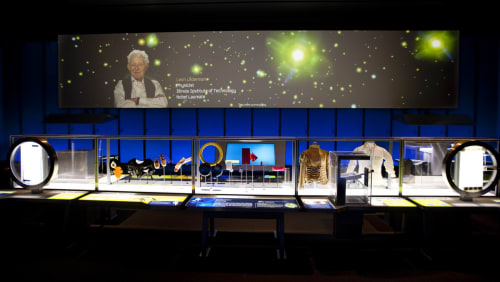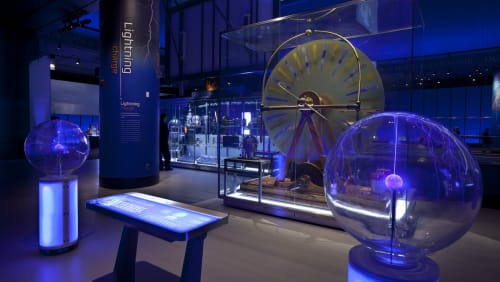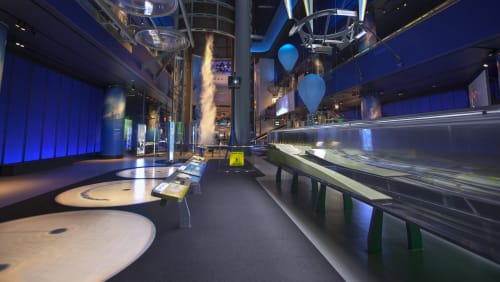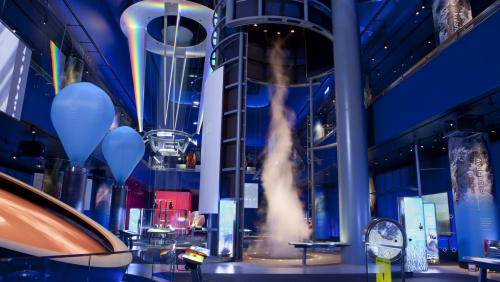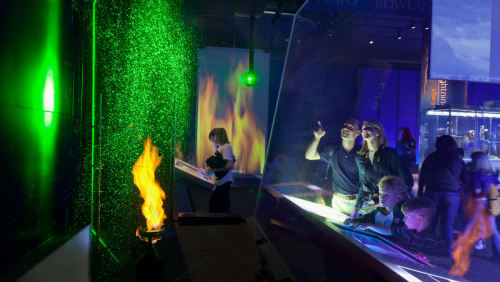Science Storms: Avalanche
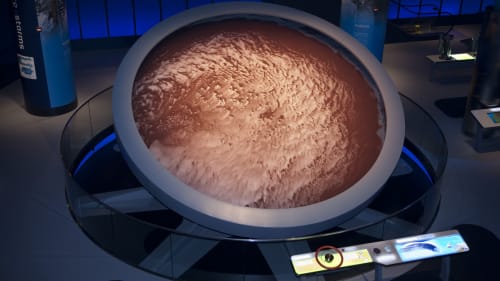
It's the poetry of motion
Avalanches — or flows of granular material — offer stunning examples of how forces such as friction and gravity can act on an object, affecting its motion. Watch patterns of cascading granules change as you adjust the speed of the rotating Avalanche Disk. Find the right angle and velocity needed to launch a tennis ball projectile into a net across the exhibit hall. Repeat Leonardo da Vinci's friction studies for yourself, conduct Galileo's inclined plane experiment, and observe the fascinating "Brazil nut effect."
Avalanche Disk
Take granular physics for a spin as you rotate the Avalanche Disk. One grain by itself is a solid, but many grains together can behave like a solid, a liquid or even a gas. Filled with a two-tone mixture of white glass beads and red garnet sand, the 20-foot, inclined Avalanche Disk provides a window for watching granules flow, shear, mix, separate and freeze. You can control the disk's rotations, accelerating and decelerating to see how granular matter can defy expectations of how solid matter behaves. Produced under a license granted by Ned Kahn.

Force Chains
A working model straight from one of the few laboratories using this relatively new technique, Force Chains is an experiment to see and measure stress in a granular material. Photoelastic disks inside the Force Chains container show the distribution of stress as visible streaks of light. Use a magnet to move and apply two-dimensional force to the disks, and watch the network of stress lines change in surprising and brilliant ways. Scientists use experiments like this one to better understand the effect of stress on granular systems, improving everything from shipping materials to seismology.
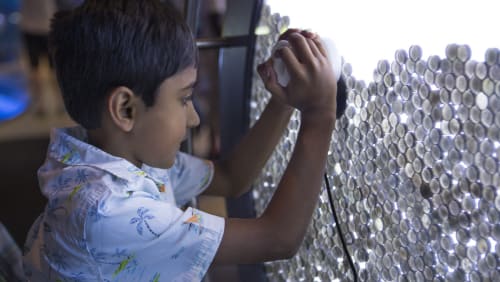
Newton's Cradle
Named for Sir Isaac himself, the Newton’s Cradle is more commonly known as an “executive desktop toy.” Perhaps that's because it's mesmerizing to watch this live demonstration of Newton’s laws of motion, even in its miniature versions. Now try this giant Newton's Cradle: seven bowling-ball-sized spheres, suspended by cables from the ceiling. At the control console, select the number of spheres to mechanically draw back and release. Concepts like conservation of momentum, collisions and energy transfer become tangible in this fun device, whether you call it "Newton's Cradle" or simply "giant desk toy."
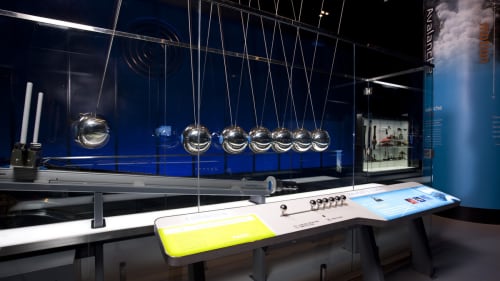
Projectiles
The 15-foot jump shot or Hail Mary pass won't look the same after you try this experiment in projectile motion. Both athletes and scientists predict trajectories based on a projectile's initial angle and velocity. Can you fire a tennis ball 45 feet across Allstate Court and into the net? Prepare with some virtual coaching on achieving the perfect parabola. Then set your parameters and ready, set, launch!
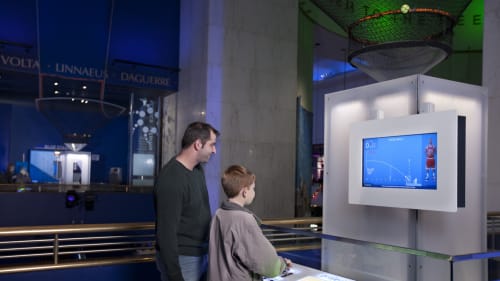
Explore more of Science Storms
Wonder is all Natural
Plan your visit to observe and experiment with seven natural phenomena.
